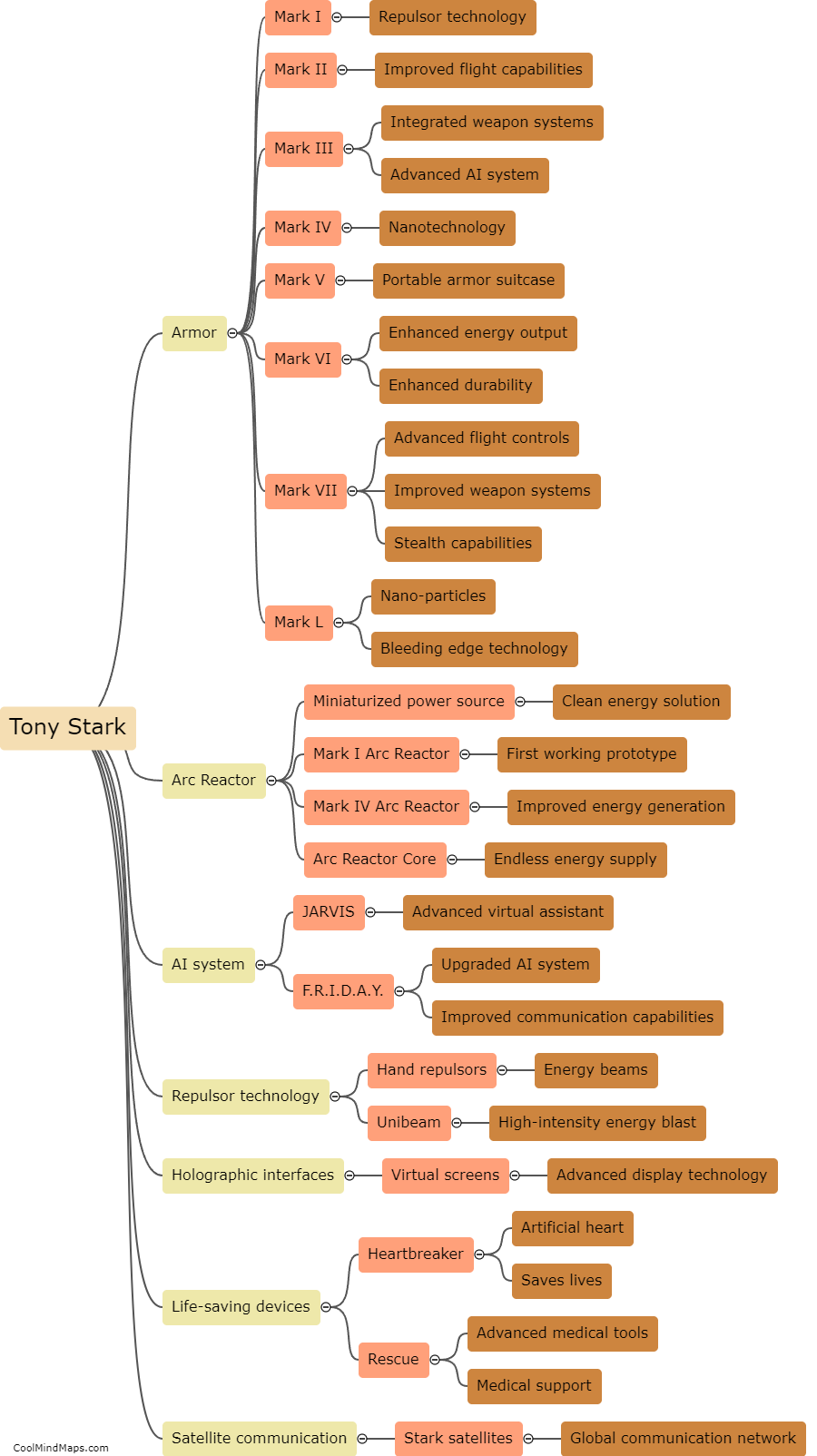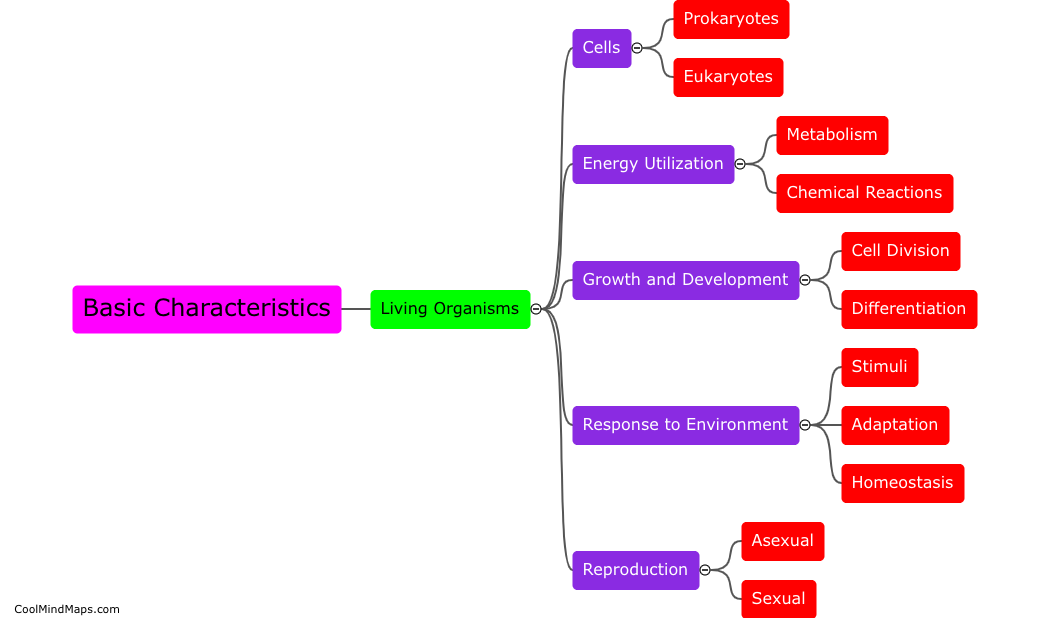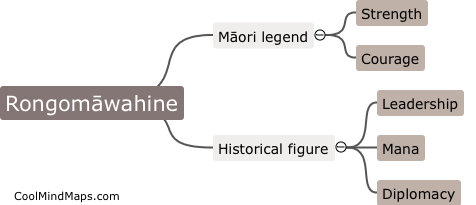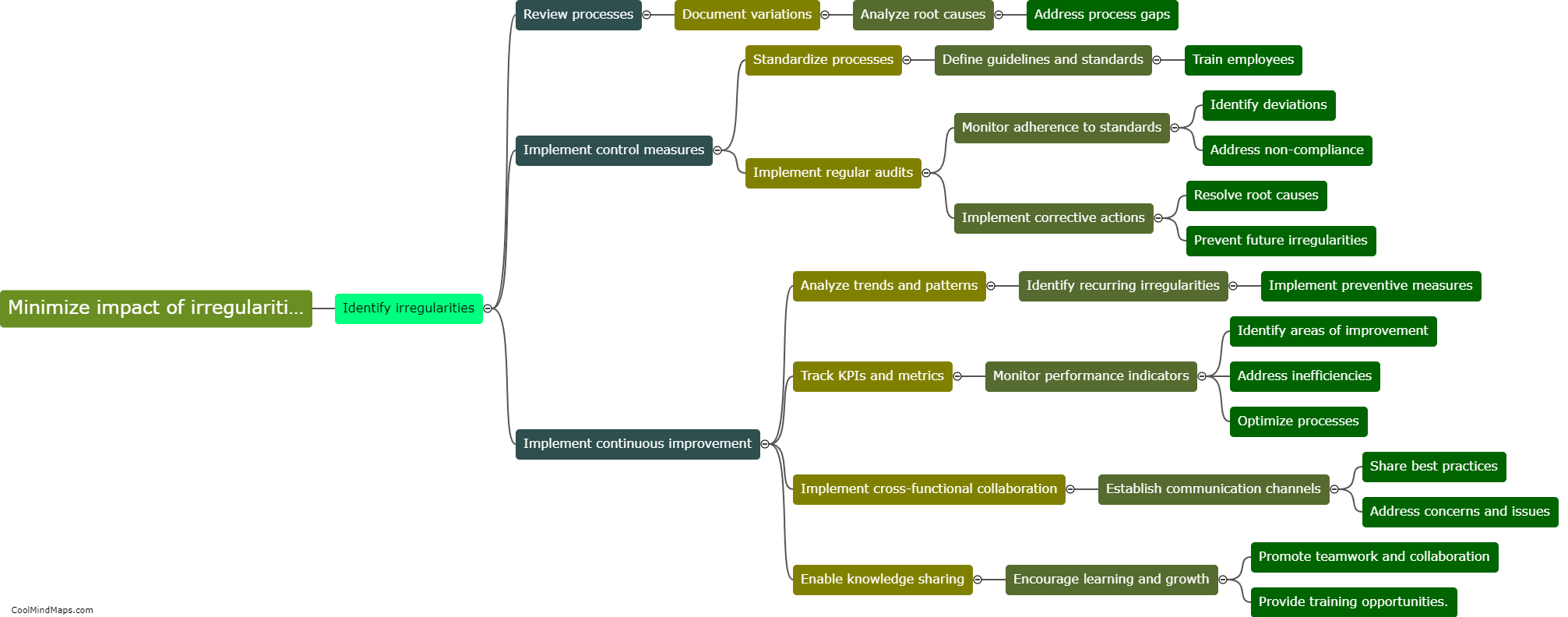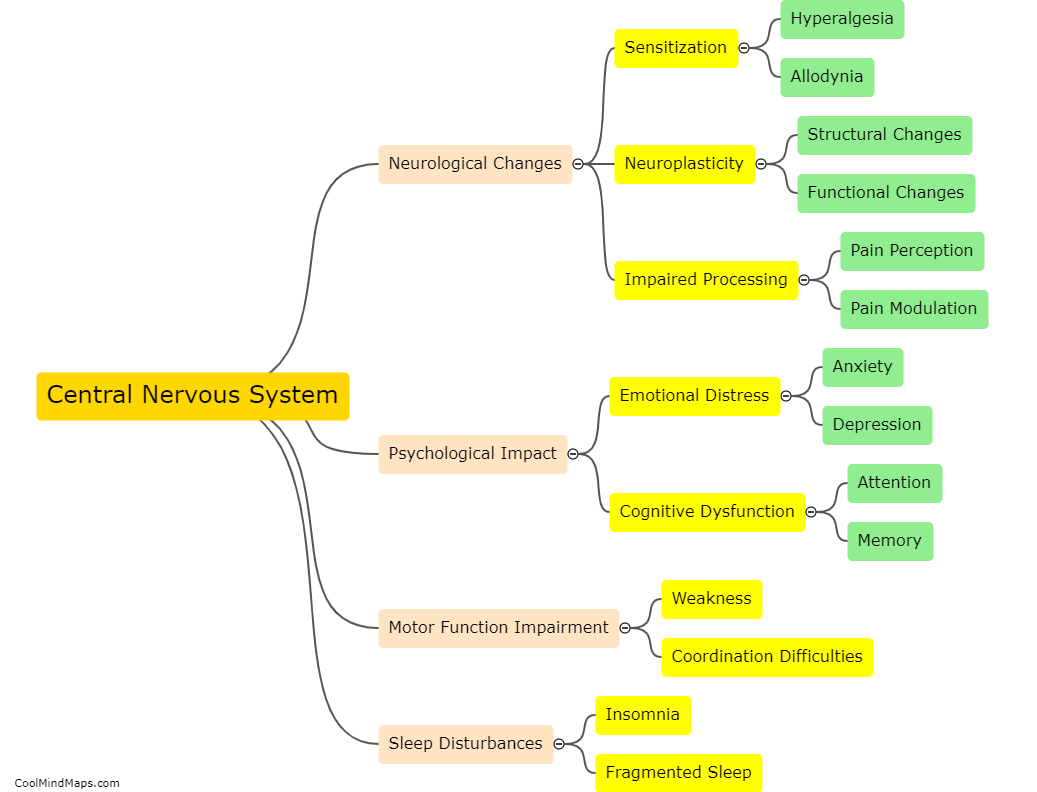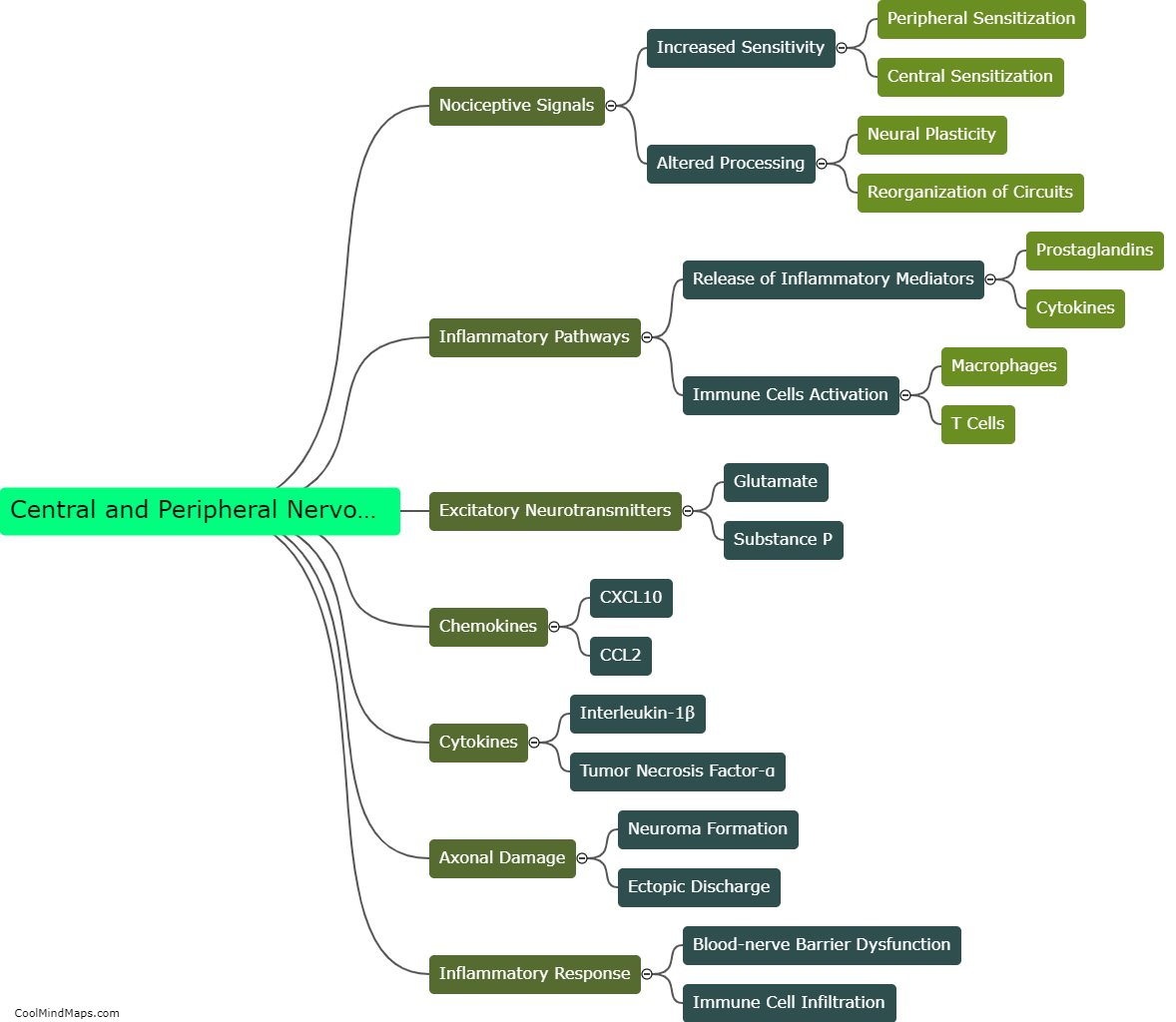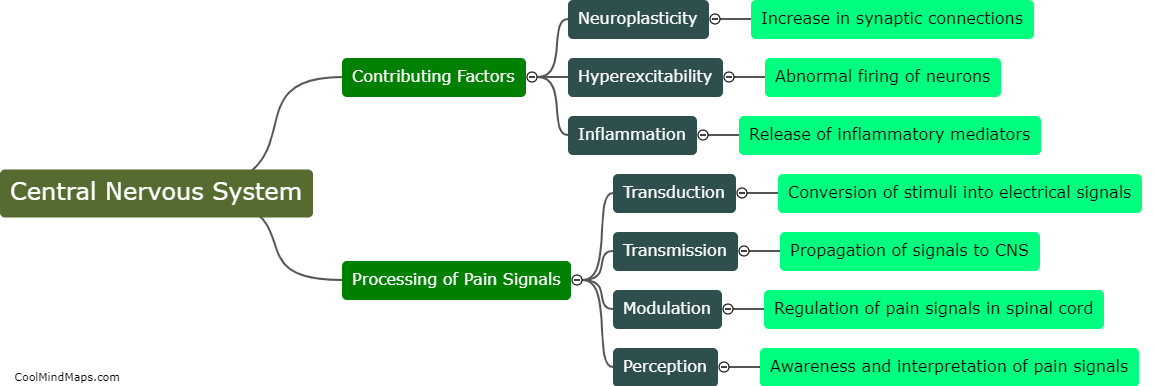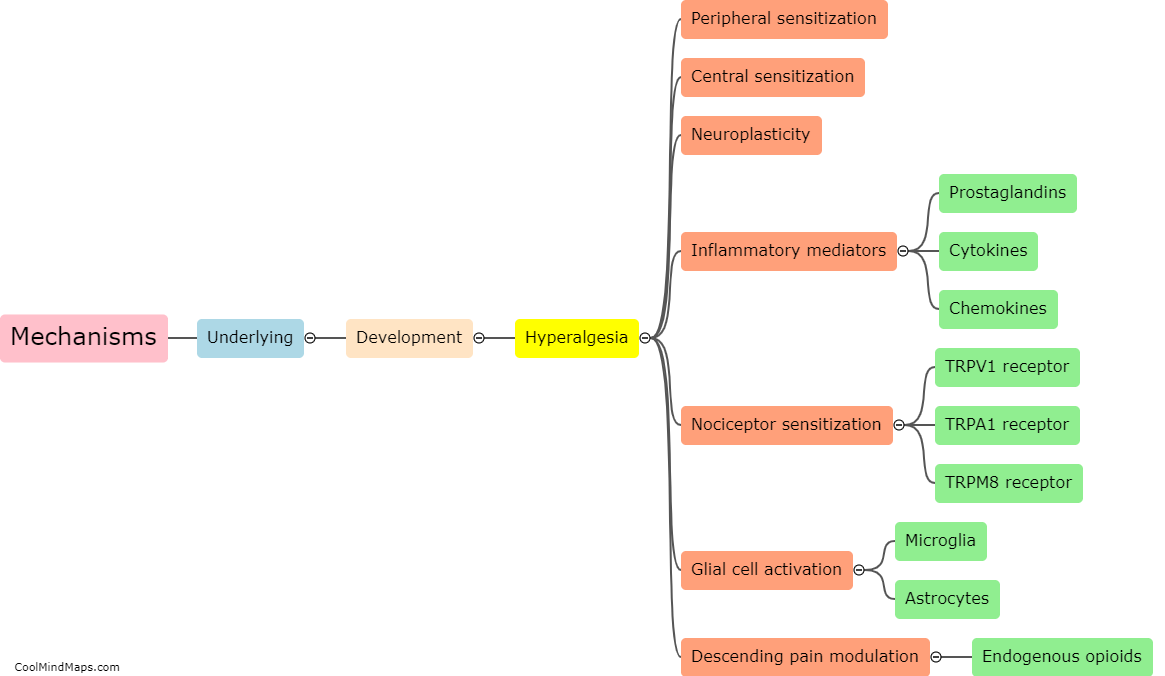How do interventions targeting the central and peripheral nervous system impact chronic pain?
Interventions targeting the central and peripheral nervous system can have a significant impact on chronic pain. Chronic pain is often associated with altered processing of pain signals within the nervous system, both centrally (in the brain and spinal cord) and peripherally (in the sensory nerves). Central interventions, such as medications that target neurotransmitters or modulate pain pathways in the brain, can help regulate pain signals and reduce the perception of pain. Peripheral interventions, on the other hand, involve procedures that directly target the nerves responsible for transmitting pain signals, such as nerve blocks or neurostimulation techniques. By interrupting or modulating the transmission of pain signals, these interventions can effectively alleviate chronic pain and improve overall quality of life for individuals suffering from this condition.
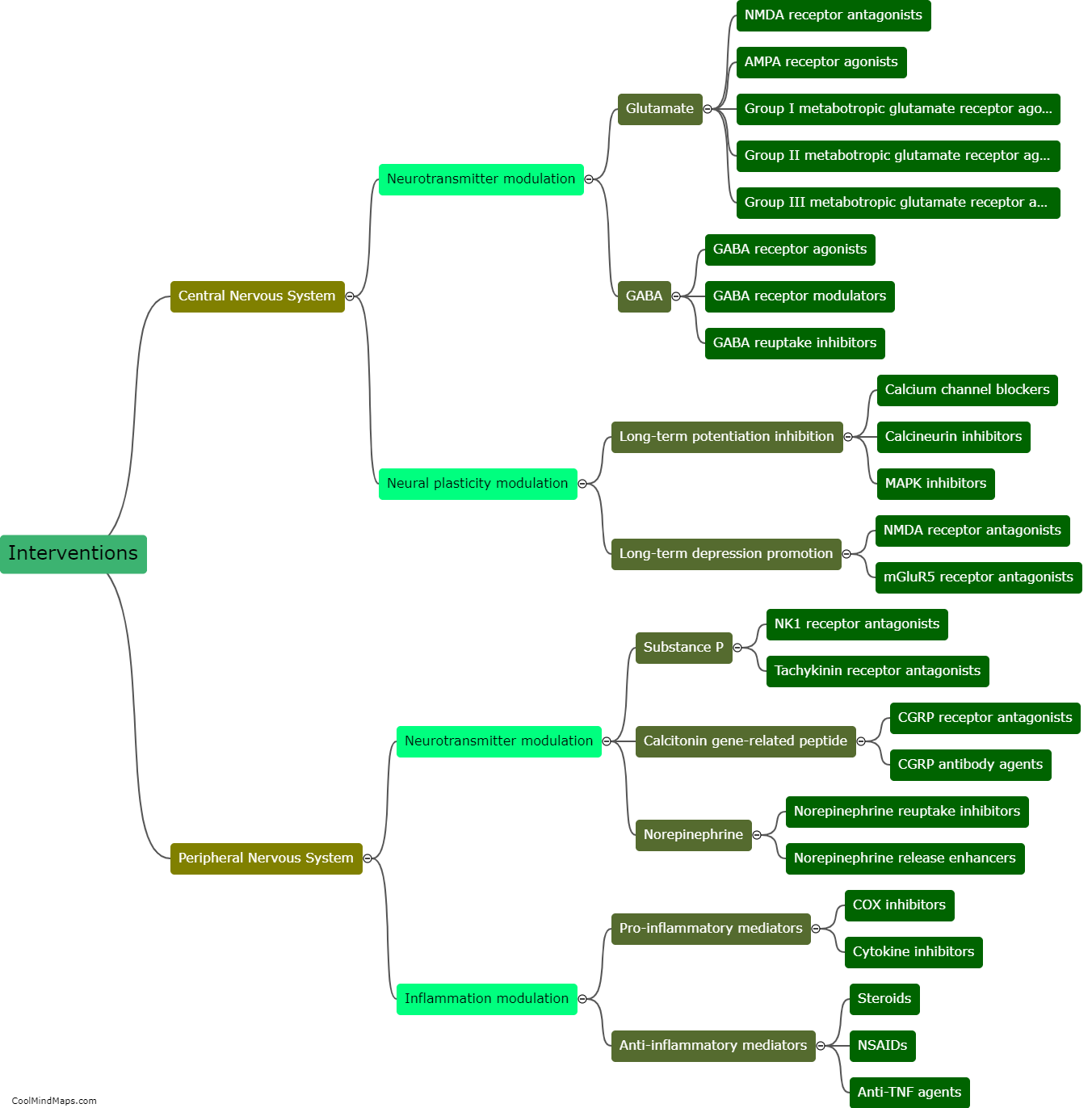
This mind map was published on 2 December 2023 and has been viewed 100 times.
